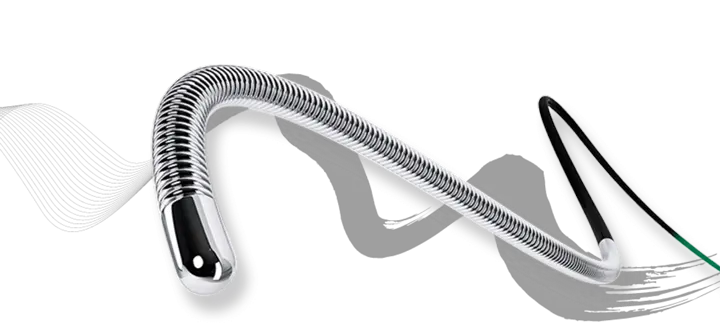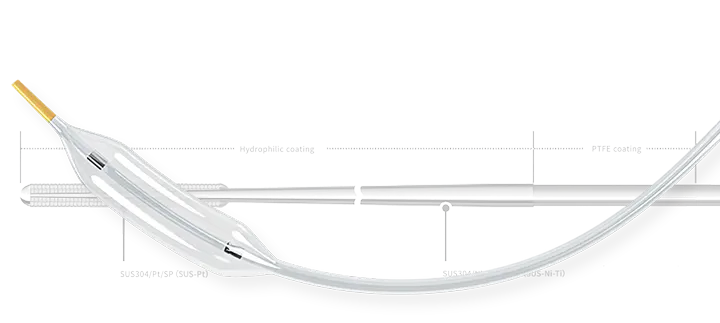Stroke
Healthcare
About This Information:
This English version is a translation of content originally created based on medical information used in Japan. Accordingly, the data and treatment approaches presented reflect the situation in Japan and may differ from those in other countries or regions.
Supervised by: Dr. Masataka Takeuchi
A stroke occurs when the brain does not get enough blood, resulting in damage to part of the brain. This can happen when a blood vessel in the brain is blocked or ruptures.
|
Ischemic stroke |
Hemorrhagic stroke |
Subarachnoid hemorrhage |
|---|---|---|
|
Sudden blockage of blood vessels in the brain causes blood flow to be cut off, resulting in the death of brain nerve cells. 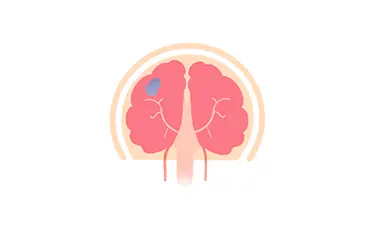
|
A blood vessel ruptures, causing bleeding in the brain, which can form into a blood clot and compress the brain. 
|
A bulge in an artery in the brain (brain aneurysm) ruptures, and bleeding occurs in the subarachnoid space. 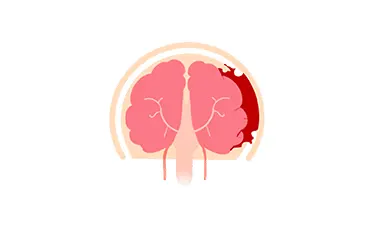
|
Types of strokes
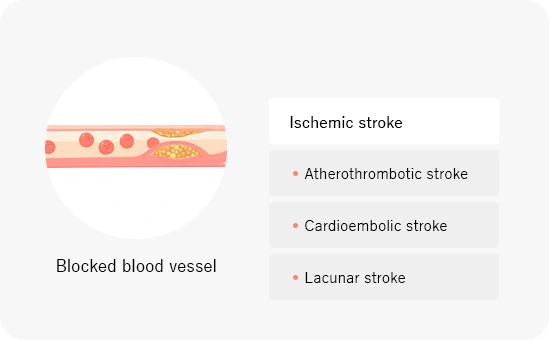
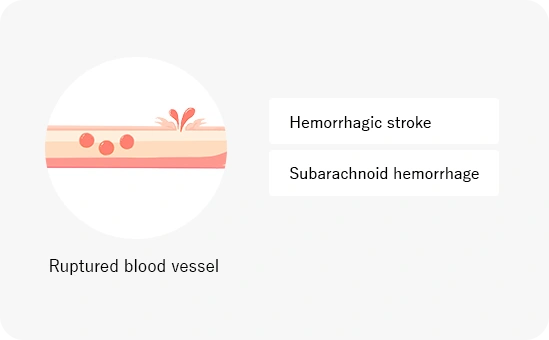
Initial symptoms of a stroke
The keyword is "FAST."
Stroke symptoms include face drooping, arm weakness, and speech difficulties. If you have any one of these symptoms, the likelihood that you are having a stroke is 70% or higher.
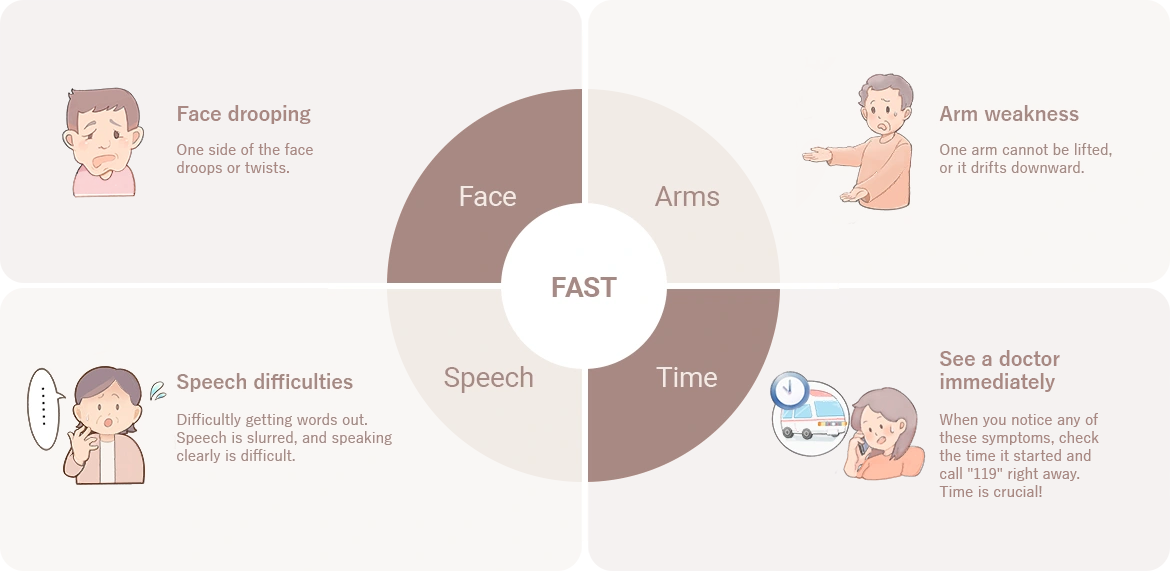
Be careful even if a symptom subsides – What is a transient ischemic attack (TIA)?
After manifesting, symptoms may subside within a few minutes. This happens when the blood flow to the brain is only temporarily disrupted; symptoms manifest but disappear because the blood flow is restored. This is called a transient ischemic attack. After such an attack, 15–20% of people will reportedly experience an ischemic stroke within the next three months. Do not leave the attack untreated, even if symptoms subside. See a doctor immediately to prevent an ischemic stroke.
